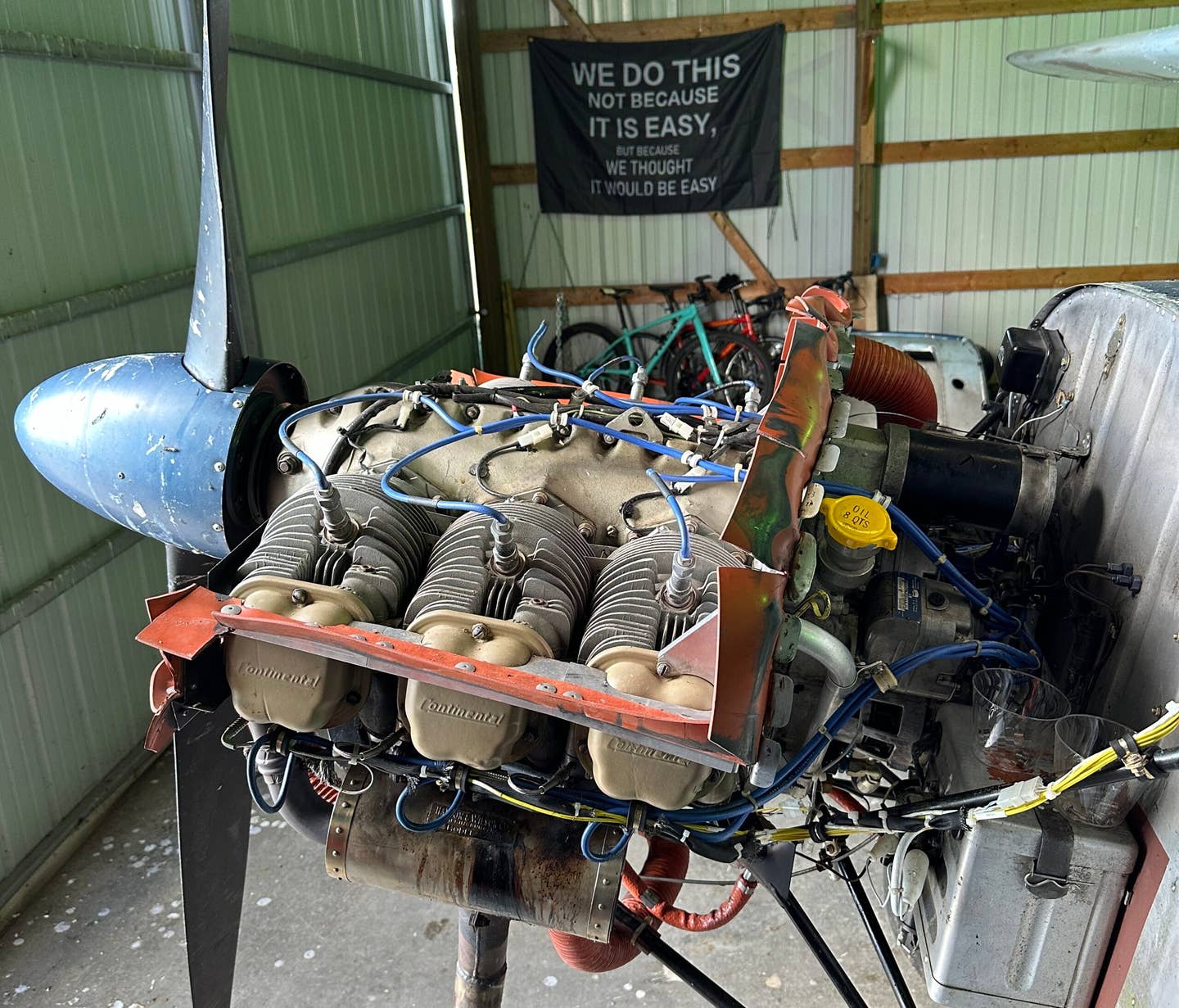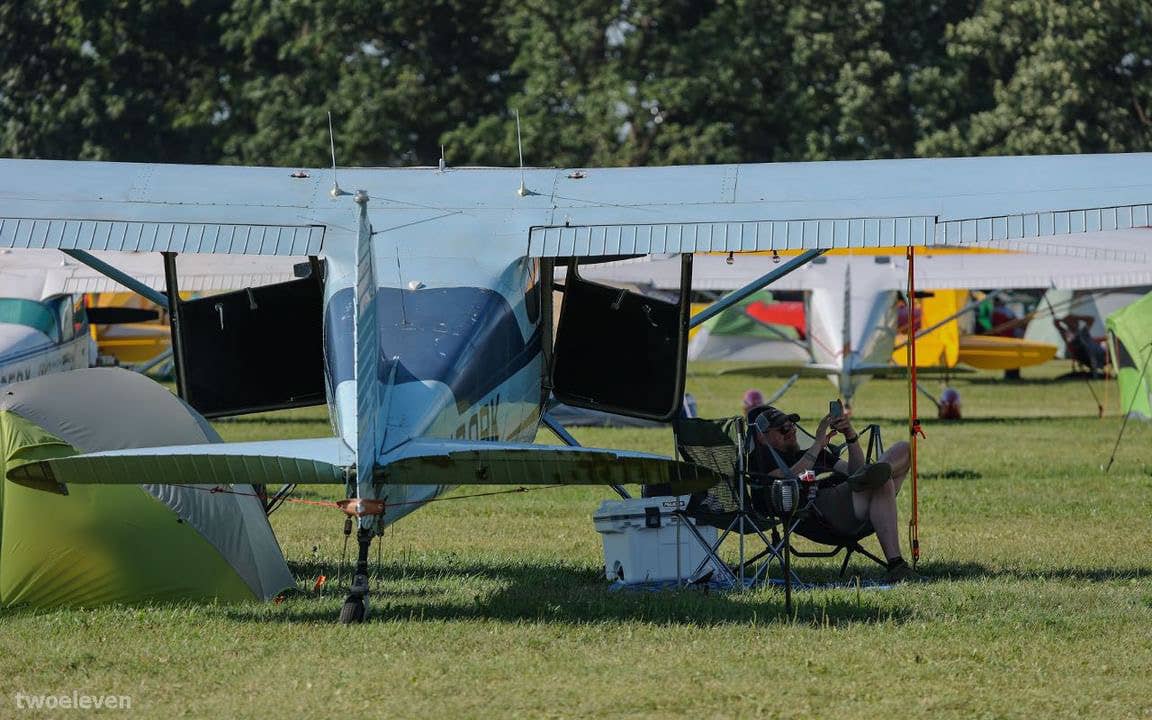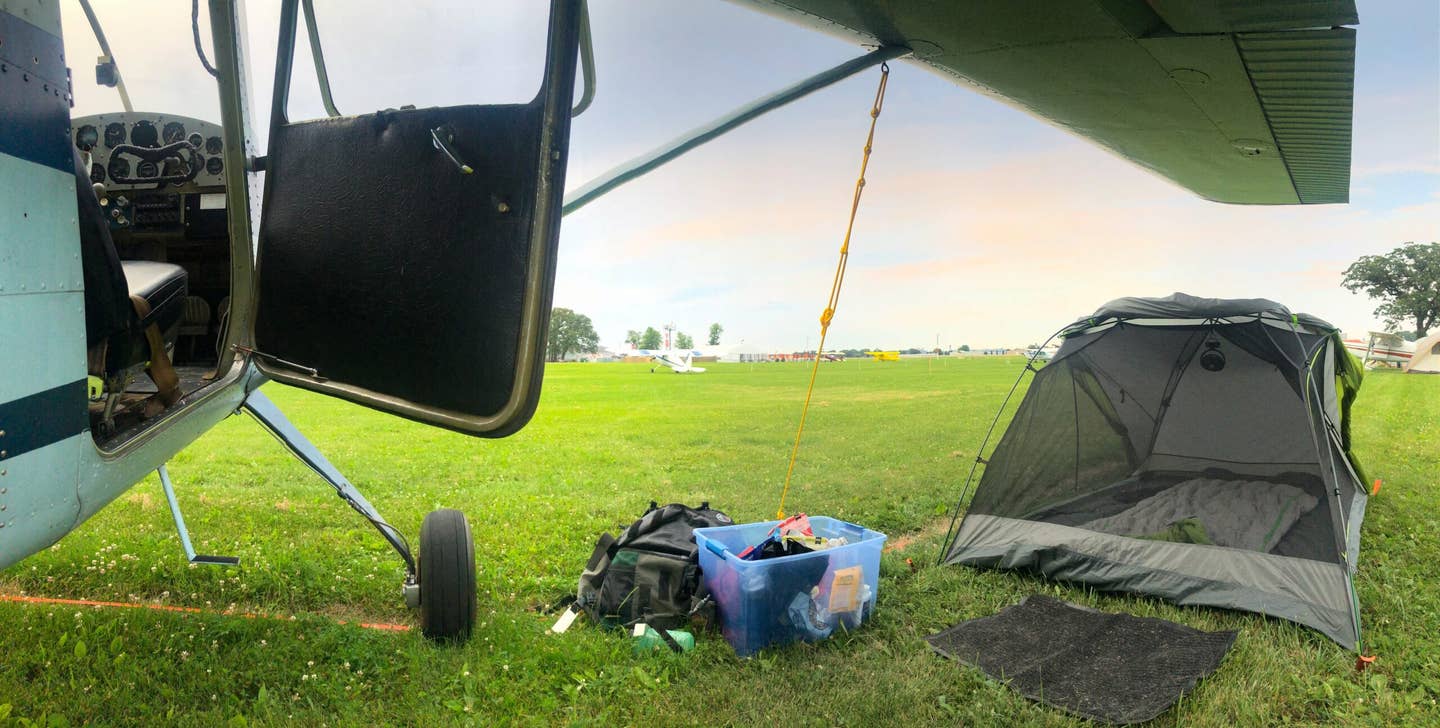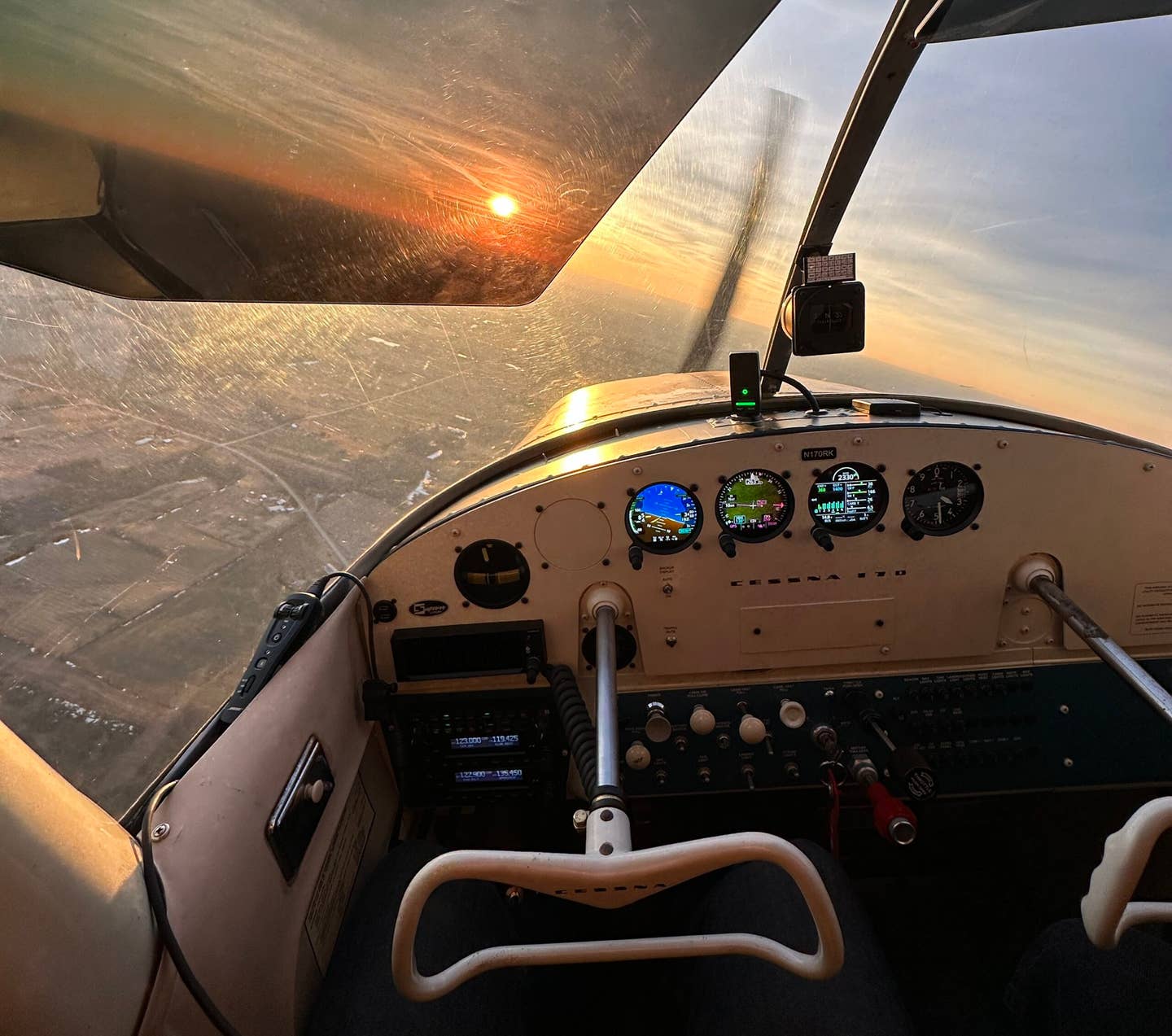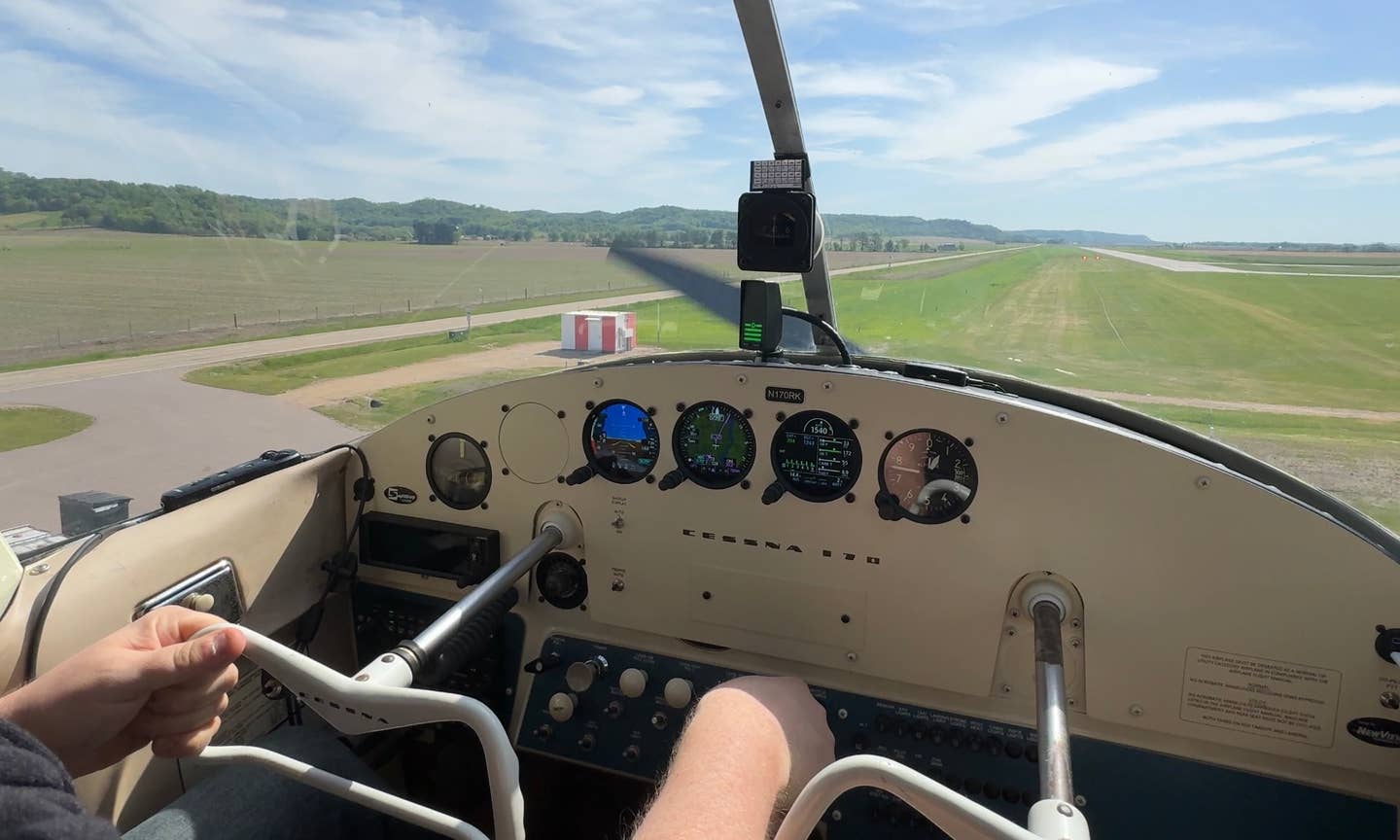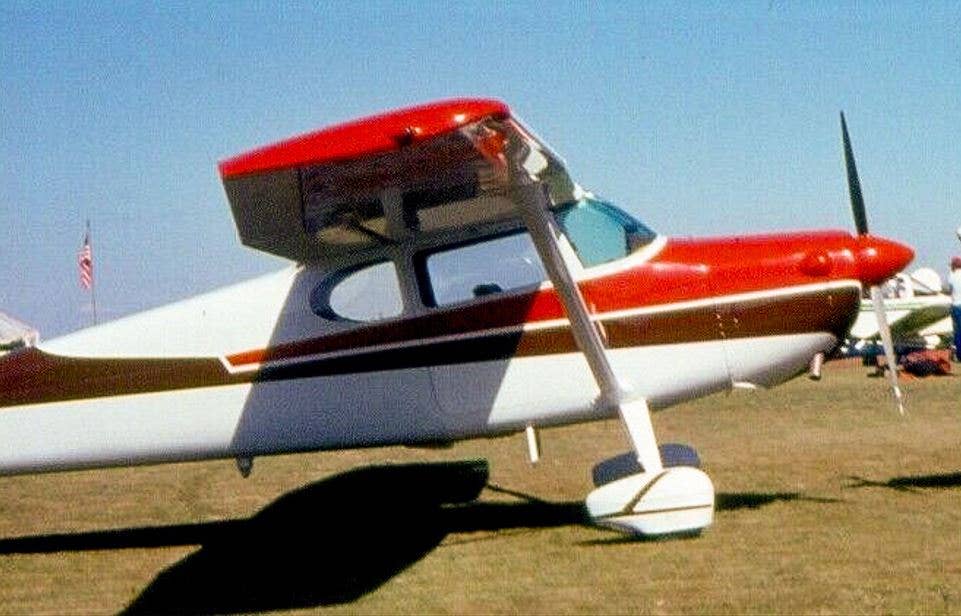The Pros and Cons of Aircraft Towing Solutions
There are plenty of options, but each has its advantages and disadvantages.
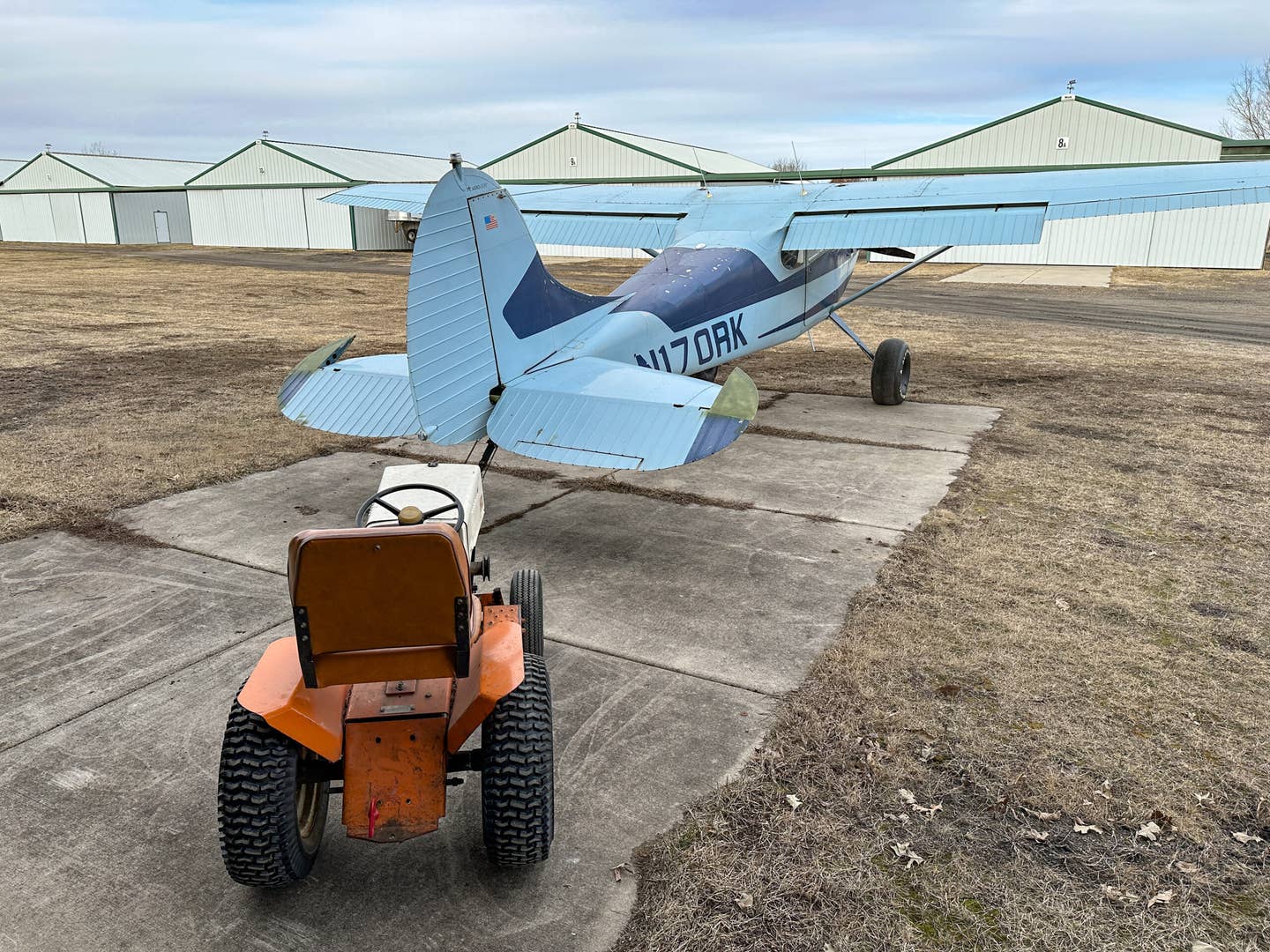
Outfitting a tractor for the job is just one way to approach moving an airplane around. [Jason McDowell]
Ask any aircraft mechanic what the cheapest part of an airplane is, and more often than not, their answer will be “the owner.” While mostly true, what I find fascinating is our inconsistency. Tens of thousands of dollars worth of avionics upgrades and performance mods? Sign us up! Fifty-dollar ramp fees and fuel that’s 30 cents more per gallon than usual? You’ve got to be kidding.
It’s a bizarre set of standards we live by that usually defies logic. In my case, I can’t wrap my mind around spending more than about $500 to $1,000 on a tug to pull my airplane into and out of the hangar. I just can’t.
I know it makes perfect sense to invest in a high-quality, long-term solution to an ever-present problem. “Buy once, cry once,” as they say. But I just can’t bring myself to spend the money on one, and I spent considerable time and effort finding a workable solution for my first airplane.
Here, then, I present a brief overview of towing options for the new aircraft owner.
Towbar
Pros:
- Cheap
- Simple
- Zero maintenance
Cons:
- Provides steering assistance only—no power assist
- Not a solution for heavy aircraft or slick ground surfaces
This is what most aircraft owners start out with. Ranging from flimsy, lightweight, collapsable ones that can easily stow in a baggage compartment to large, beefy versions that enable you to put your weight into it, towbars rely on human power…and human traction. The latter, I have come to learn, is a key concern in the Northern states.
Attempting to move a fully fueled airplane up a slight grade into or out of a hangar with snow on the ground is often a futile effort. So, too, is stopping an already moving airplane—a somewhat more risky endeavor with potentially disastrous results. For owners of lightweight Ercoupes and 150s, a basic towbar will usually suffice, but for everyone else, the benefits of powered options quickly become apparent.
- READ MORE: Managing the Doldrums of Winter
Stationary Winch
Pros:
- Relatively inexpensive
- Takes up virtually no space
- Requires virtually no maintenance
Cons:
- Provides assistance in one direction only
- Requires installation into a concrete floor or wall stud
- Requires remote-control option for tricycle gear aircraft to enable steering with towbar
- Typically best suited to taildraggers as it can easily apply excessive and improper force to tail tie-down rings
Having never used a winch personally, I rely on the testimony of others. By and large, the people happiest with winch setups are those who have a requirement to pull taildraggers uphill into their hangars. As the tailwheel is the sturdiest point to apply such force, this makes sense. Some owners of tricycle gear aircraft report damage resulting from pulling a tail tie-down ring backward when it was designed to be pulled downward.
Tricycle gear owners are also hindered somewhat by the need to steer the nosewheel at the front of the airplane while controlling the winch in the back. Both corded and wireless winches are available to solve this problem, but this adds expense, eroding the winch’s primary benefit—low cost. For certain owners, a winch setup can provide a tidy solution to a difficult-to-park airplane, but the limitations are significant.
‘Frankentug’
Pros:
- Relatively inexpensive
Cons:
- Maintenance often required to resurrect older examples
- Abundance of substandard designs
- Many require proprietary attachments for each aircraft type
“Frankentug” is my own term. After browsing all the shiny new tug options online, I eventually slinked over to Craigslist and Facebook Marketplace to peruse the old, decrepit, used offerings. Many date back to the Ronald Regan administration, with correspondingly Eastern Bloc- and Cold War-era designs. These are the Frankentugs.
Sometimes you get lucky. Sometimes you search for “airplane tug” and are presented with several lightly used options that happen to be all set up for the exact type of aircraft you own. And sometimes these options are offered at sub-$1,000 prices.
More commonly, however, the offerings resemble a living museum of backyard shade-tree engineering. Some are battery-powered, others plug directly into the wall, and still others are gas powered. The gas-powered examples will invariably require a thorough carb cleaning, and the battery-powered options will often require fresh batteries.
When I located my own Frankentug, I felt fortunate to find a plug-in electric version made by Powertow. Sure, the wiring up toward the handles was frayed and presented a shock hazard. And, sure, the tire was flat. But at $275, the price was right, and upon spotting the listing, I promptly hopped in the car and drove an hour to purchase it.
Unbeknownst to me, the tires on Powertows are horrifically difficult to remove and install. The adjacent gear for the chain drive is positioned so close that tire removal is nearly impossible. Accordingly, in the event of a flat tire, Powertow actually recommends that owners “purchase an entirely new wheel/tire/axle assembly for $170” to solve the problem.
Finding this quite off-putting, I instead begged my local small engine repair shop to replace the tube. Some poor kid was tasked with this and spent hours fighting with it before he was ultimately successful. Feeling bad for him and admiring his perseverance, I tipped him $40.
Next, because my tug was set up for a tricycle-gear aircraft, I had to spend an additional $250 for a tailwheel hookup kit, and then had to drill holes in the tug to install it. This brought my total expenditure to nearly $700. Still ultimately worth it, but just barely. Part of me wishes I had instead put the $700 toward a new, perfect tug.
Garden Tractors
Pros:
- Plentiful inexpensive options available
- Good hydrostatic transmissions provide light, precise touch to forward/back motion
- Can double as snow-removal solution
Cons:
- Still requires towbar of some kind
- Some fabrication typically required to connect towbar to tractor
- Taildraggers require ample hangar space behind airplane to accommodate length of tractor and towbar
The easiest part of employing the garden tractor solution is sourcing one. Sub-$1,000 tractors are plentiful, and it matters not if the mower deck is missing or broken. Most important is the smoothness and controllability of the transmission engagement so as not to place undue stress upon your airplane.
The most challenging aspect of the tractor option is the method of connection to the airplane. You’ll have to fabricate or source some kind of heavy-duty towbar, and you’ll also likely have to fabricate a means of attaching the towbar to the tractor. This may involve welding a ball hitch bracket onto the frame.
A good towbar is critical, and it perhaps bears mentioning that under no circumstances should an airplane be pulled with a rope or strap. Often, the more demanding job of a tug is to bring the airplane to a stop, and fabric doesn’t work so well under compression.
Best Tugs’ Alpha 2 and Alpha 3
Pros:
- Literally everything
Cons:
- Cost
I should preface this section with reassurance that I am in no way sponsored by Best Tugs, nor am I receiving any compensation for my views. Based on my own firsthand experience using its products, the tugs manufactured by the Utah-based company truly do live up to their name.
Best Tugs’ Alpha 2 and Alpha 3 models are powered by onboard batteries and employ actual differentials between their two wheels to provide perfect traction and steering. Power is controlled by a buttery-smooth electronic speed control that enables you to apply torque to the wheels so smoothly and delicately it seems you could clamp a Sharpie marker in the jaws and effortlessly sign your name on the hangar floor.
The only downside? These models cost roughly $3,500 to $4,000. Perfect as they are, that’s an expense I just can’t come to terms with—and I’ve tried. I’ve reasoned that one is simply parking most of the money, as one can expect to recoup at least 50 percent of the cost by selling it in the future. And that a permanent tug solution amounts to roughly the cost of one annual inspection. And that it’s not unlike a one-time insurance premium that makes you less likely to damage a wingtip or tail surface while moving your airplane around.
But nevertheless, the cost looms large. For the time being, I’m mostly content wrestling with my trusty Frankentug, risking electrocution, tripping over the cord, and reminding myself that it’s good to regularly get an upper-body workout to stay healthy and fit.

Subscribe to Our Newsletter
Get the latest FLYING stories delivered directly to your inbox

